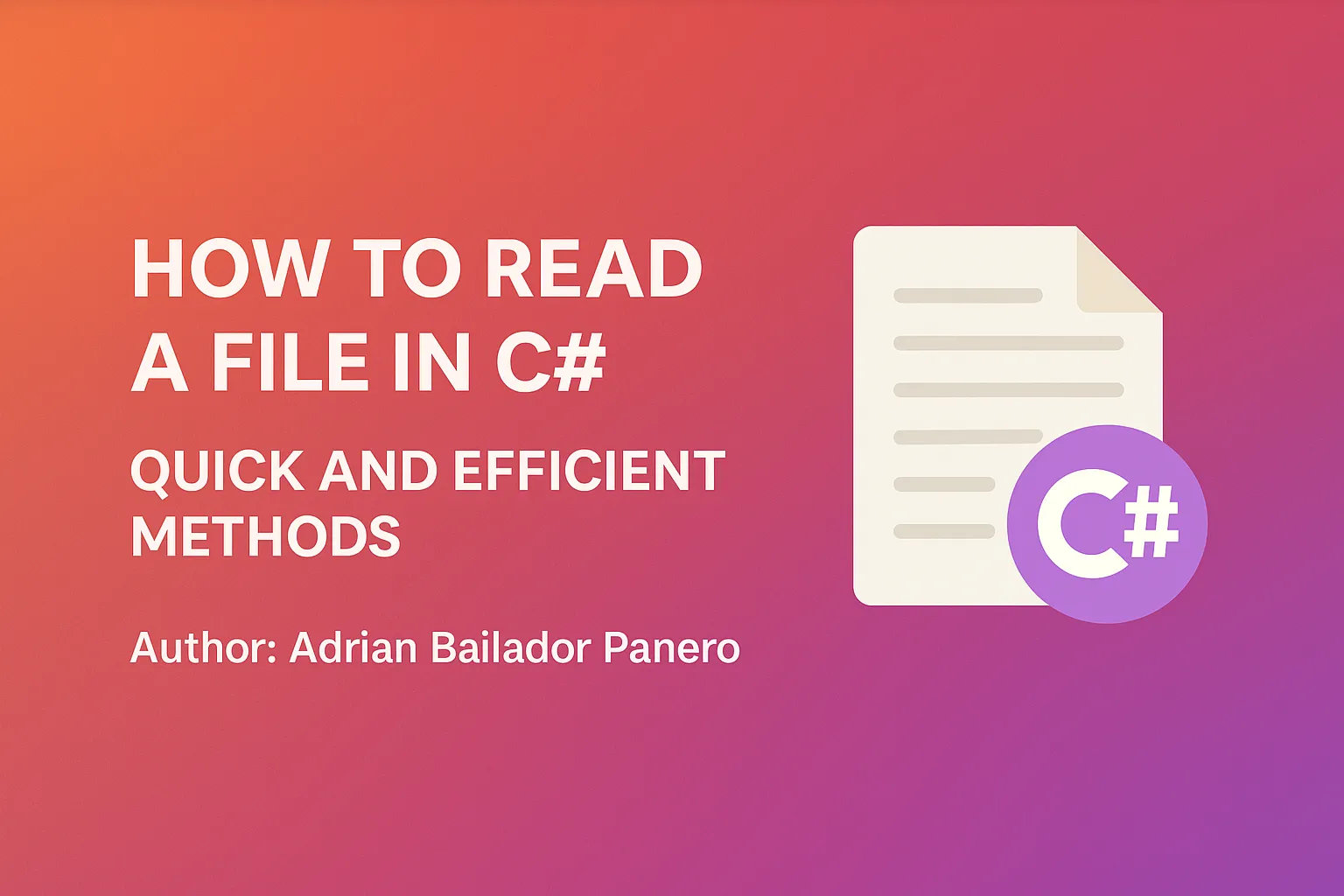
Table of Contents
- ReadAllText – The Quickest Way
- ReadAllLines – Easy Line-by-Line
- ReadLines – Best for Large Files
- StreamReader – Full Control
- Asynchronous Reading
- Benchmark Example
- Encoding Considerations
- File Existence Check
- Comparison Summary
- GitHub Example
- Frequently Asked Questions (FAQ)
1. ReadAllText – The Quickest Way
string content = File.ReadAllText("example.txt");
Console.WriteLine(content);Best for small files when you need the entire content at once.
2. ReadAllLines – Easy Line-by-Line
string[] lines = File.ReadAllLines("example.txt");
foreach (var line in lines)
{
Console.WriteLine(line);
}Ideal when processing individual lines but the file size is moderate.
3. ReadLines – Best for Large Files
foreach (var line in File.ReadLines("example.txt"))
{
Console.WriteLine(line);
}This method uses lazy evaluation, making it memory-efficient for large files.
4. StreamReader – Full Control
using (var reader = new StreamReader("example.txt", Encoding.UTF8))
{
string? line;
while ((line = reader.ReadLine()) != null)
{
Console.WriteLine(line);
}
}Use when you need to specify encoding or implement custom logic for each line.
5. Asynchronous Reading
Reading an entire file asynchronously:
string content = await File.ReadAllTextAsync("example.txt");
Console.WriteLine(content);For asynchronous line-by-line reading:
await foreach (var line in ReadLinesAsync("example.txt"))
{
Console.WriteLine(line);
}
async IAsyncEnumerable<string> ReadLinesAsync(string path)
{
using var reader = new StreamReader(path);
while (await reader.ReadLineAsync() is { } line)
{
yield return line;
}
}Recommended for GUI applications or web servers where blocking is undesirable.
6. Benchmark Example
var sw = Stopwatch.StartNew();
string content = File.ReadAllText("example.txt");
sw.Stop();
Console.WriteLine($"Elapsed time: {sw.ElapsedMilliseconds} ms");Use similar code to compare different reading methods in your environment.
7. Encoding Considerations
To specify a particular encoding:
string content = File.ReadAllText("example.txt", Encoding.GetEncoding("Windows-1252"));Useful encodings include:
Encoding.UTF8(default)Encoding.Unicode(UTF-16)Encoding.ASCIIEncoding.GetEncoding("ISO-8859-1")
8. File Existence Check
Always check if the file exists to avoid exceptions:
if (!File.Exists("example.txt"))
{
Console.WriteLine("File not found.");
return;
}9. Comparison Summary
| Method | Best For | Memory Use | Async | Lazy |
|---|---|---|---|---|
| ReadAllText | Small files | High | Yes | No |
| ReadAllLines | Small/medium files | High | Yes | No |
| ReadLines | Large files | Low | No | Yes |
| StreamReader | Full control | Medium | Yes | Yes |
| ReadAllTextAsync | Async + small files | High | Yes | No |
| StreamReader + async | Async + large files | Low | Yes | Yes |
10. GitHub Example
The full example project will be available at:
https://github.com/AdrianBailador/FileReadingDemo
11. Frequently Asked Questions (FAQ)
What is considered a large file to read into memory?
As a general rule:
- Under 10 MB: Safe for full read
- 10–100 MB: Use with caution
- Over 100 MB: Use streaming (
ReadLinesorStreamReader)
How to read a CSV file in C#?
For simple CSV parsing:
foreach (var line in File.ReadLines("data.csv"))
{
var fields = line.Split(',');
Console.WriteLine($"Name: {fields[0]}, Age: {fields[1]}");
}For complex CSV files, use a library like CsvHelper.
How to check if a file exists before reading it in C#?
Use File.Exists:
if (!File.Exists("example.txt"))
{
Console.WriteLine("The file does not exist.");
return;
}